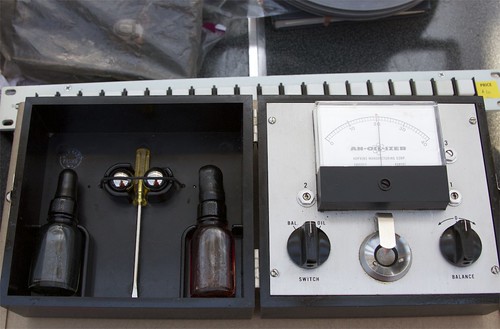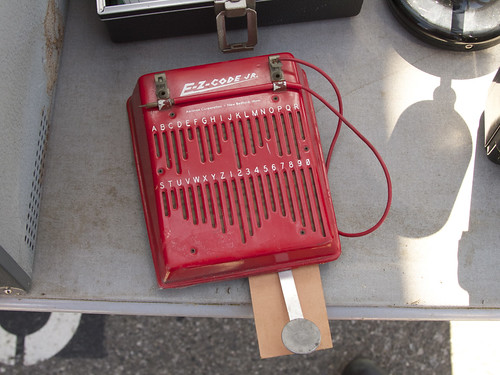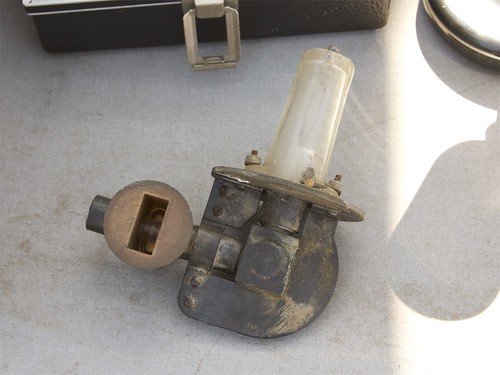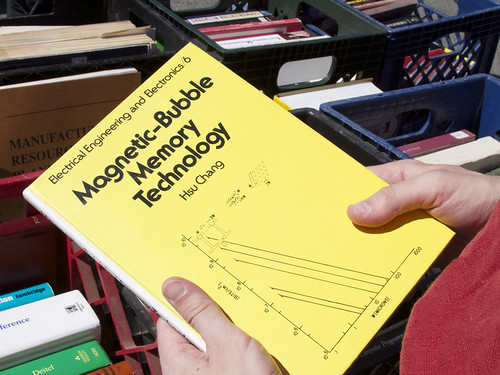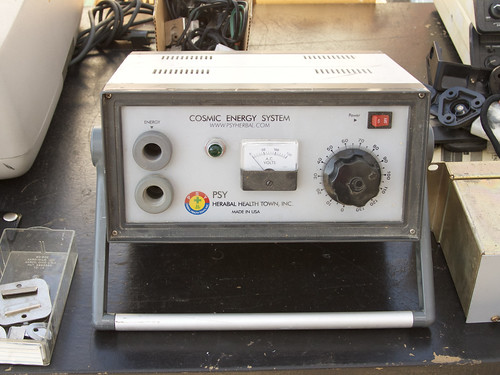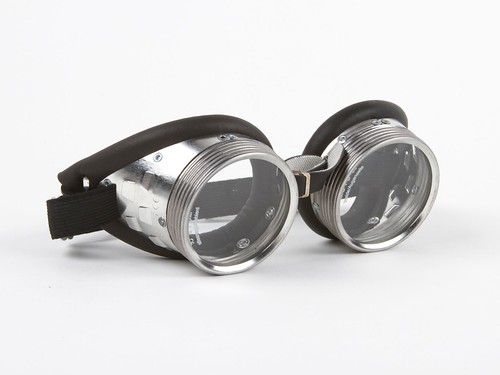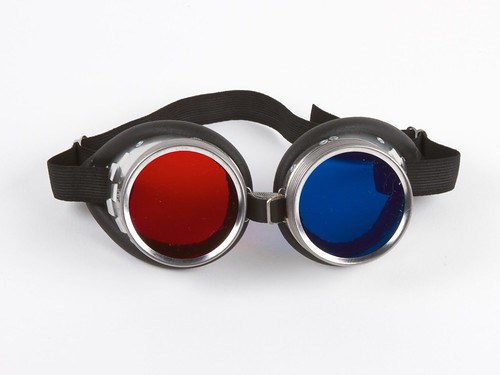Our collaborator Sylvia went on the Katie Couric show yesterday. She showed off the WaterColorBot and did a couple of science demonstrations with Katie. Her video segments are here and here. Fantastic job, Sylvia!
All posts by Lenore Edman
Maker Camp: Robots

Today, Tuesday, July 16, Super Awesome Sylvia and I will be joining Maker Camp for a special Google+ hangout focused on robots at 1 pm PDT. Sylvia will be demonstrating her WaterColorBot, which we’ve worked together on.
We’ll be on after our good friend, Erin RobotGrrl, shares some of her robot-building techniques in Robot Hangout #1 at 11 am PDT.
Peach Chutney
Here’s how to make a variant on our plum chutney, tailored for the creamy sweetness of peaches.
We’ve reduced the overall quantity of fruit and sugar to get a higher spice concentration. The cayenne and ginger are increased to make it even spicier. Pepper flakes are added both for flavor, and for pretty flecks of color against the pale peach pieces. We also added cloves for a little more depth of flavor.
The peaches are not peeled, both to get more peach flavor and for the color the skins add. Wash well or peel (blanching makes peeling easier) if the provenance of your peaches is unknown and you’re concerned about pesticides.
Ingredients:
- 6 cups cut up pieces of peaches, pits removed, skins (optionally) left on
- 2 lemons, cut into small pieces, seeds removed
- juice from 3 more lemons
- 2-3 Tbsp fresh ginger, peeled and grated (a microplane works great)
- 1 Tbsp cumin seeds
- 1 stick of cinnamon
- 1 tsp cayenne pepper
- 1/2 tsp red pepper flakes
- 1/2 tsp garam masala
- 10-12 whole cloves
- 1/2 cup water
- 3 cups sugar
Put everything except the sugar into a sauce pot and cook, stirring occasionally, until the fruit starts to soften, about 10-15 minutes.
Add sugar and cook, stirring frequently, until it thickens to a consistency you like (20 minutes to an hour). Remove cinnamon stick after cooking.
You can also follow your favorite canning procedure for longer term storage. Makes about 3 pints.
Nuts and Volts Project Parts

We’re listed as one of the sources for parts for a smart necklace project in the most recent issue of Nuts and Volts magazine. Over in our shop, you can find the resistors and switches mentioned, along with many other useful project components.
Thanks to James Sentman for the heads-up and the picture!
Oddities at the Electronics Flea Market
Today was the monthly Electronics Flea Market in Cupertino, and we came across some gems this month.
Above, an AN-OIL-IZER. The seller said her geologist father used it for testing oil purity.
It’s described in patent number 3182255, a device for capacitively testing lubricating oil (e.g., engine oil) for contaminants, by looking for changes in its dielectric constant. To use it, you place a drop of the oil in the holder, and the ball bearing into that drop of oil. The bearing is held down by a leaf spring, keeping it indexed against the holder. This forms an oil-filled capacitor between the ball bearing and a lower curved plate that is insulated from the bearing. The capacitance will vary as the dielectric constant of the oil changes due to contamination. It comes with two ball bearings, as well as oil samples for calibration.
The E-Z-Code Jr. is a tool for learning morse code: when you draw the “electric pencil” through the slots, it crosses contacts in the correct spacing to make the characters. It also has a hinged telegraph key which can be tucked away below the device.
The seller of the E-Z-Code Jr. told me that the thing I really should be photographing was this magnetron. It is a beautiful old piece of hardware, with its wave guide and high-power tube.
We found a book on Magnetic-Bubble Memory Technology. We also saw a book on tube delay memory. We’re not sure if these are a step up from the single-bit flip-flop memory in our Digi-Comp II.
I’d love to see the circuit diagram for the Cosmic Energy System by Psy Herabel [sic] Health Town, Inc.! (Sadly, their domain no longer seems to be active.)
Dr. Nim
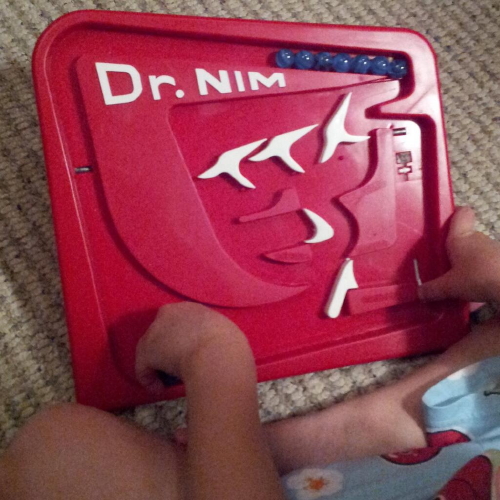
Our friend Brian (the designer of the EBB driver board which is used in the Eggbot) recently posted this picture on twitter, with the following caption:
Kids found 1966 ‘computer’ ‘game’ in the closet and LOVE it. Dr. Nim always wins. Our future may be OK.
Dr. NIM was designed by the same engineer, John Godfrey, who designed the Digi-Comp II, and it was manufactured in the mid-1960’s by the same company, E.S.R. Inc. It is even described in the same patent as the Digi-Comp II and works in the same manner, using mechanical flip-flops triggered by marbles. Only, to play the ancient game of Nim instead of doing binary calculations. We were very curious about how Brian came by one, and asked for more information. He wrote what follows:
We were on a week long vacation in Michigan. We rented a large house on the shore of Lake Michigan near Traverse City. The house looked like an extreme example of 1960’s decorating—nothing has been updated since. (Large tables with built-in ash trays, shag carpet, an old radio that had a “magic eye” that lit up when your FM radio station was ‘in hi-fi stereo’, etc.) And, in the closet with the games, was one called Dr. Nim. Us adults never gave it a second glance until one of the older kids noticed that it said “computer” on it, and pulled it out to see if she could get on Facebook with it. My ears perked up, and when I saw the front cover, I couldn’t stop playing with it. Which is not surprising considering my background as an embedded systems engineer. But what I couldn’t believe is that the kids loved it too! We were on vacation with 2 other families, each of which had 3 kids (like ours) of various ages. Very quickly, the 10 year old figured out how to beat Dr. Nim. Of course that made all the other kids want to try. Even the 4 year old learned to play. And then some of the other adults (even non-engineers) tried it for themselves, asking how it could possibly know how many marbles to take each turn so that it would (almost) always win. “How can pieces of plastic be a computer?” they asked. So we had a nice chat about where the term ‘computer’ comes from.
The thing that got me most excited was not that (modern) kids picked it up and were fascinated by it, nor that other adults were intrigued, but the thought that, in 1968 when it was available for sale to the general public, enough normal Americans bought it that it ended up in people’s game closets along with decks of cards and Monopoly. I suppose the thought of owning a ‘computer’ when such things were all the rage, was so new that spending a few dollars on a plastic mechanical game computer was something a lot of people did just out of curiosity.
And the instruction manual! I should have scanned it in. It has a mini-course in binary logic and boolean equations, ending with a discussion on how the game works, and how you can set it up in several different ways to play different games. And then it went on with “does this mean Dr. Nim can think?” and the open ended questions of machine thinking.
Too bad somebody doesn’t make something like that today . . . . <grin>
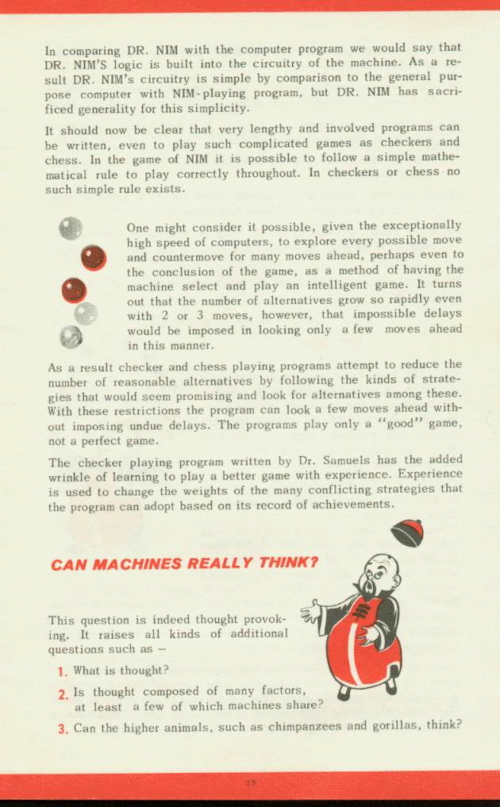
After Brian wrote back to us, we found the manual for Dr. Nim through the Friends of Digi-Comp group. (Dr. Nim games frequently come up on eBay as well, if you’re interested in playing with one.)
The manual is truly incredible, with in-depth discussions about not just the mechanism of the game, but commentary on the effect of computing on culture in the long run. We’ll leave you with a thought from the manual, c. 1965:
The strides that man has made in the last 15 years in developing machines that extend and supplement his thinking are truly astounding. Who can say what enormous strides will take place in the next 15 to 30 years?
Followup: Solder Expiration
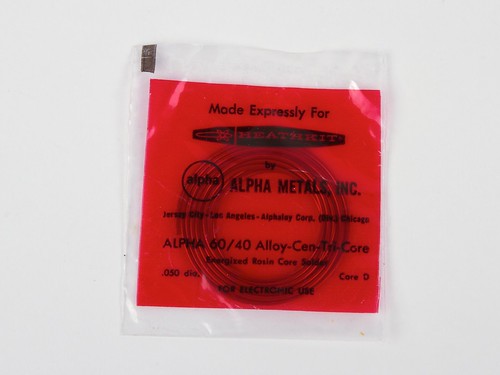
When we recently asked the question, “Does solder expire?” you gave us some excellent answers. Many commenters had a story similar to haineux’s (sometimes replacing 1960’s with 70’s, 80’s or 90’s):
Just recently used up a spool of my father’s early-1960?s-era solder from Lafayette Radio Electronics, and now I’m working on a later-60?s spool labeled “Archer” (a Radio Shack house brand).
There might be some reason new solder is better for something, but I’ve not had any troubles doing standard PCB and parts soldering.
Steve had a great story about learning to solder with a roll of 1/8? flux core solder:
The last time it had been used (~20 years previous) it hadn’t been sealed — the flux core was open to the air. About a foot of it had dried up and evaporated. I didn’t know what I was doing so I didn’t notice at the time, but kept cursing because the solder wouldn’t stick to anything. Eventually I used the roll down to where the good solder lived and it started to flow properly, but it was a frustrating way to learn to solder. The outside of the solder was pretty corroded, a fuzzy matte gray, but it heated and flowed like anything else with fresher rosin.
To this day, whenever I solder with larger gauge solder I make sure the tip of the solder tube is closed before putting it away. I figure it will be good for another 20+ years that way.
Brad had a slightly different perspective:
Old solder might be perfectly “usable,” but try using a 10 year old spool and a brand new spool one after the other on a small-pitch SMD part, and tell me that there isn’t a big difference!
After noticing this for the first time, I never buy more solder than I can use in a couple years.
Paul reflected on different applications having different requirements:
At work we are required to throw out “expired” solder and solder paste. It is a liability problem, the FAA hates to find expired chemicals and uncalibrated equipment on their inspections.
At home I have used twenty year old rolls. My stuff at home is just for my use and no ones life is at risk.
So the general consensus seems to be that rosin core solder will work nearly indefinitely so long as the rosin isn’t affected by storage conditions. Even then, as long as the bad section is removed, the rest will work fine. A few connoisseurs prefer newer solder (especially for small parts), and industrial applications may require strict adherence to expiration dates, but many of the rest of us will continue to use our (long) expired solder until it’s gone.
Simple 3D Safety Goggle Mod
Awesome: These German Safety Goggles made of shiny steel and safety glass are being imported to North America by Lee Valley Tools.
Even More Awesome: A quick lens swap turns them into incredibly cool costume 3D goggles. Continue reading Simple 3D Safety Goggle Mod
DIY Hatbox Stamps

Matthew Borgatti recently put up an excellent post about the process of creating a hat box stamp for Pork Pie Hatters:
A professional looking tool made from a few simple digital fabrication techniques and some easy hand finishing. I really love when a process can be this straightforward and precise and take the hand crafting out of the equation. Laser cutting allows me to put the time and labor and love in the conception step and not on the execution.
He walks through the details of the aesthetics, design, fabrication and finishing.
Time Lapse Fog over San Francisco
Adrift is a beautiful short film by Simon Christen chronicling the fog of the San Francisco bay.
I spent many mornings hiking in the dark to only find that the fog was too high, too low, or already gone by the time I got there. Luckily, once in a while the conditions would be perfect and I was able to capture something really special. Adrift is a collection of my favorite shots from these excursions into the ridges of the Marin Headlands.
Via @drwave.







